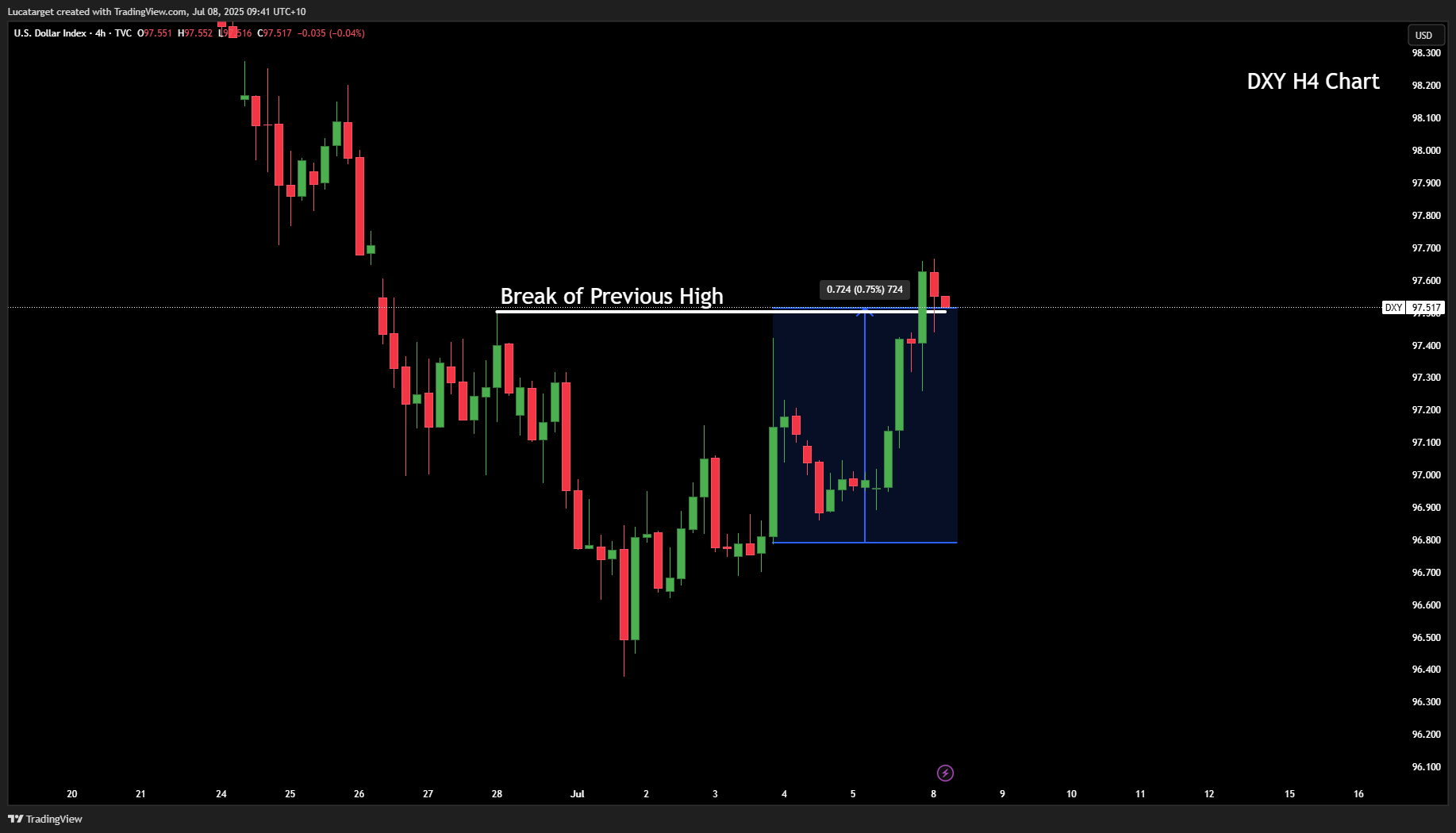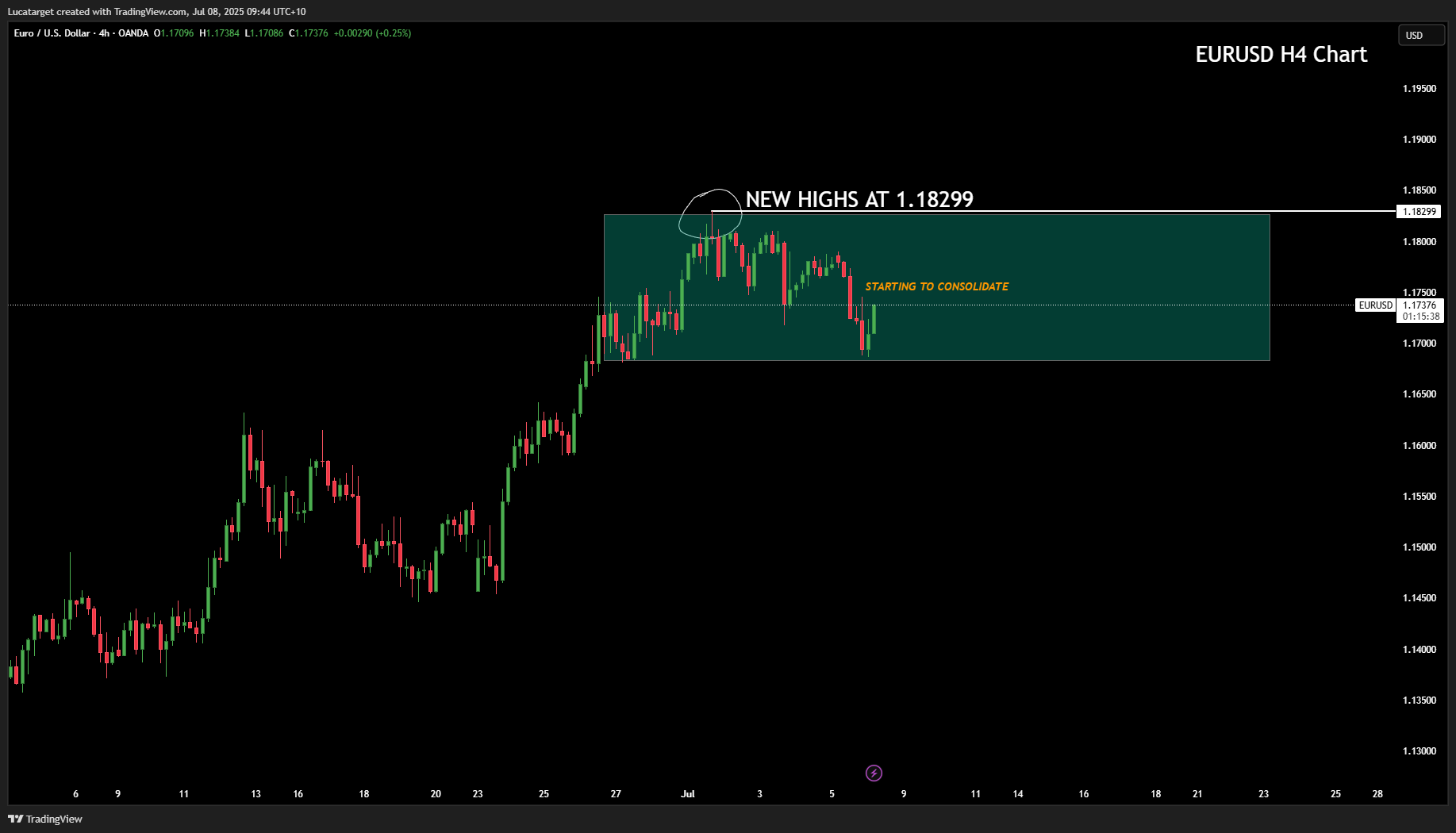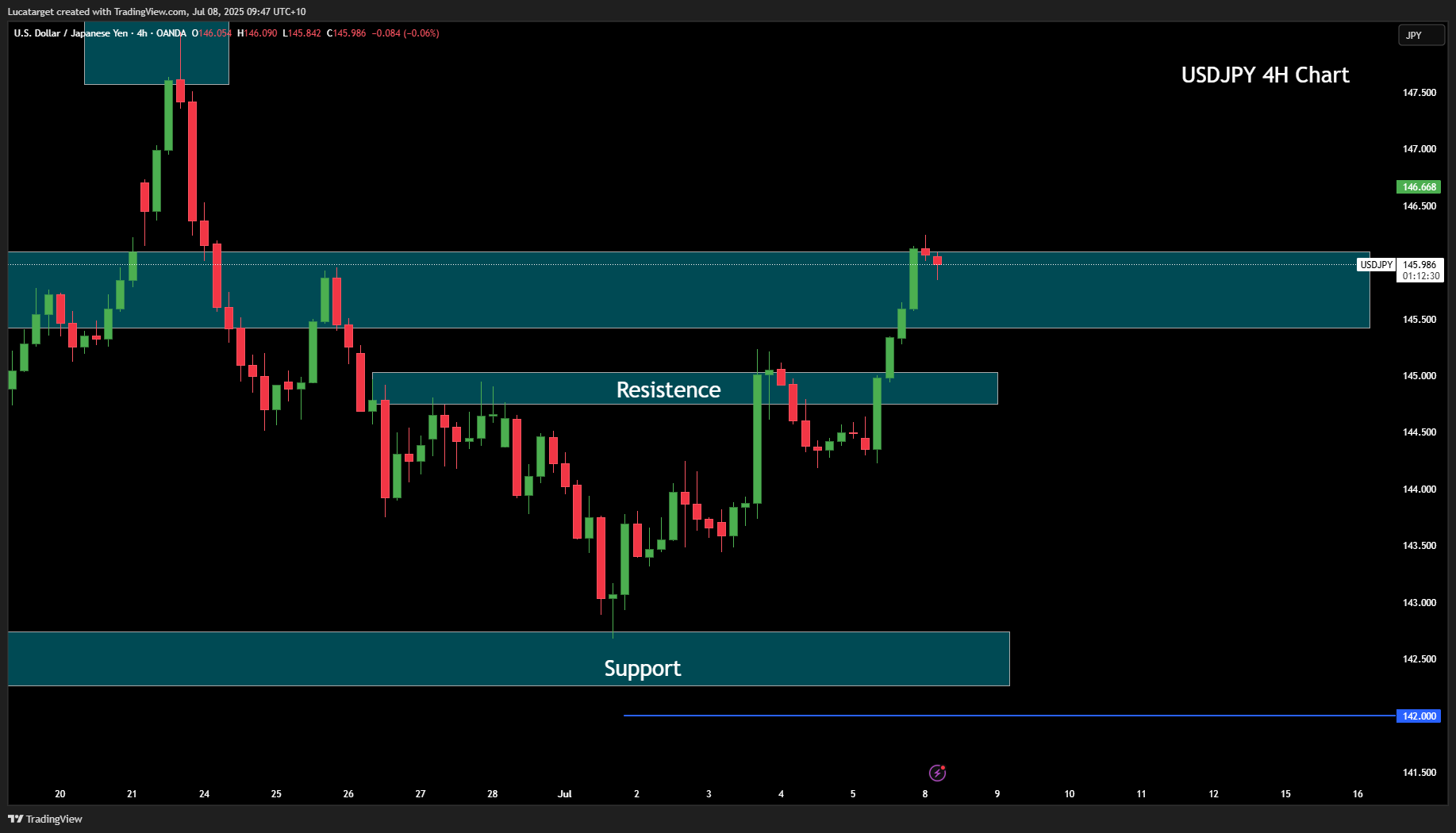
Tariffs, Central Banks, and Tired Trends: Navigating a Week of Opportunity in FX
 ACY Securities - Luca Santos
ACY Securities - Luca SantosAfter a volatile start to July, FX markets find themselves at a precarious crossroads caught between geopolitics, central bank decisions, and the fading momentum of a US dollar rally that never quite convinced.
With President Trump reigniting trade war tensions and a pair of central bank meetings on deck, this week promises fewer answers and more tactical opportunities for traders who can manage the noise.
Let’s break it down.
Trade Tensions Return: Markets Brace for Tariff Fallout
The biggest driver this week isn’t a data release it’s the geopolitical climate. President Trump has threatened an additional 10% tariff on countries deemed to be aligning with the “anti-American” policies of the BRICS bloc.
While official notices are expected to start circulating this week, implementation won’t occur until August 1. Still, the market is already reacting.
Risk sentiment has taken a hit, and the dollar is firming not because of renewed confidence in U.S. fundamentals, but because of positioning unwinds and uncertainty.

The sharp repricing of risk has lifted the USD modestly across the board, but it’s happening without any convincing data momentum.
Beneath the surface, there’s still a soft undercurrent in the greenback, and the broad bias remains bearish.
Key Takeaway: The tariff news may generate intraday volatility and pullbakcs on dollar strength, but unless these tariffs derail global growth meaningfully, any dollar rally is likely to fade.
For now at least.
EUR/USD: Looking Through the Headlines
The euro continues to consolidate after reaching new cycle highs last week.

It’s been a frustrating ride momentum surges followed by sharp retracements but the broader structure remains intact.
In fact, the willingness of real money accounts to add EUR exposure on dips has helped cushion downside moves.
European assets may look vulnerable at first glance given the tariff chatter, but there are deeper structural shifts at play.
Investors appear to be gradually reducing USD exposure and diversifying towards Europe, particularly as fiscal cohesion improves and political risk in the US escalates..
A break through recent highs of 1.18299 could open the path to the 1.19 zone a level not seen since 2021!!
USD/JPY: Another False Dawn
If the dollar has disappointed broadly, it’s nothing compared to the pain traders have felt trying to time the yen.
Last week’s rejection of key support near 142 showed promise, but momentum quickly faded as U.S. yields rebounded.

Once again, we’re stuck in the middle of the range, with no catalyst strong enough to pull the pair meaningfully lower.
The market is still searching for that "big trigger" whether it’s a collapse in U.S. data, a BOJ pivot, or a major trade deal but none of these seem imminent.
I will personally stand aside for now. Momentum is muddled, and we’re back in “wait-and-see” territory.
AUD: RBA in Focus, but the Bigger Picture Supports Strength
Today’s RBA meeting is the next immediate test.
A 25bps cut is priced in by markets, and data since May has been soft but not alarming. Inflation is now back within the target band, and employment remains steady.
With another quarterly CPI print due later this month, the RBA is likely to opt for a cautious tone rather than an aggressively dovish pivot.
Even if the RBA cuts, the broader macro environment still favors AUD strength especially if risk appetite stabilizes post-tariff headlines.
The Australian economy is better positioned fiscally than many peers, and that matters in today’s FX climate.
Look to buy dips in AUD/USD or GBP/AUD if markets overreact to a mild RBA cut. The structural bullish case remains intact.

Manage the Noise, Focus on the Edges
This is a classic tactical week in FX: no strong trend, lots of noise, and plenty of short-term dislocations caused by news headlines, not fundamentals.
The July 9th tariff deadline is the central event, but we also have two important central bank decisions that could shape price action in AUD and NZD.
If you're trading this week, focus on value levels and overreactions, not momentum. The dollar remains vulnerable in the medium term, but patience will be rewarded.
Q1: Why is the USD rising despite mixed economic data?
A1: The recent USD strength is being driven more by risk-off flows and geopolitical tension specifically Trump’s renewed tariff threats than by strong fundamentals. While last week’s data didn’t validate rate cut expectations, it also wasn’t strong enough to justify a sustained USD rally. This makes the current move more of a reaction to positioning and sentiment than conviction.
Q2: Is the euro still a buy after recent highs?
A2: Yes, the euro remains in a bullish structure. Despite recent consolidation, dips toward 1.1650 or 1.1570 offer attractive entry points. Real money flows continue to support the euro, and with broader shifts away from USD exposure, the trend still favors further gains possibly toward the 1.19 region.
Q3: What should traders expect from the RBA and RBNZ this week?
A3: The RBA is expected to cut rates by 25bps but will likely avoid sounding too dovish. The RBNZ is expected to stay on hold after a sharp easing cycle earlier this year. Both meetings may reinforce medium-term support for AUD and NZD if market pricing doesn’t shift aggressively post-decision.
Q4: Is it time to re-enter JPY trades?
A4: Not yet. USD/JPY remains stuck in a range, with false breakouts and no clear momentum. Unless we get a catalyst like weak U.S. data or a significant BOJ shift, the yen will likely remain sidelined. For now, traders should wait for better clarity or sharper dislocations.
This content may have been written by a third party. ACY makes no representation or warranty and assumes no liability as to the accuracy or completeness of the information provided, nor any loss arising from any investment based on a recommendation, forecast or other information supplies by any third-party. This content is information only, and does not constitute financial, investment or other advice on which you can rely.
LiquidityFinder
LiquidityFinder was created to take the friction out of the process of sourcing Business to Business (B2B) liquidity; to become the central reference point for liquidity in OTC electronic markets, and the means to access them. Our mission is to provide streamlined modern solutions and share valuable insight and knowledge that benefit our users.
If you would like to contribute to our website or wish to contact us, please click here or you can email us directly at press@liquidityfinder.com.
